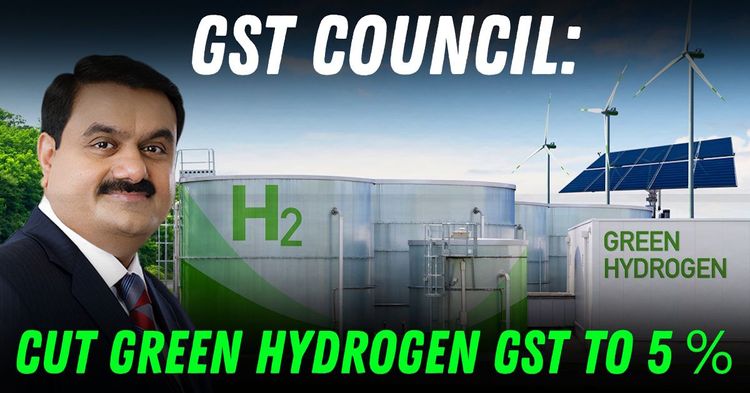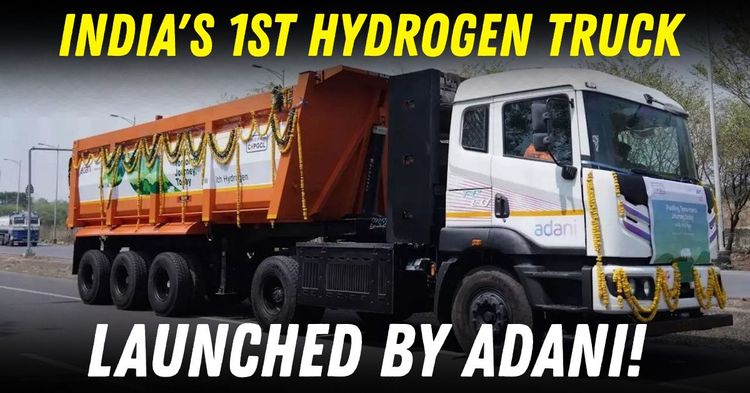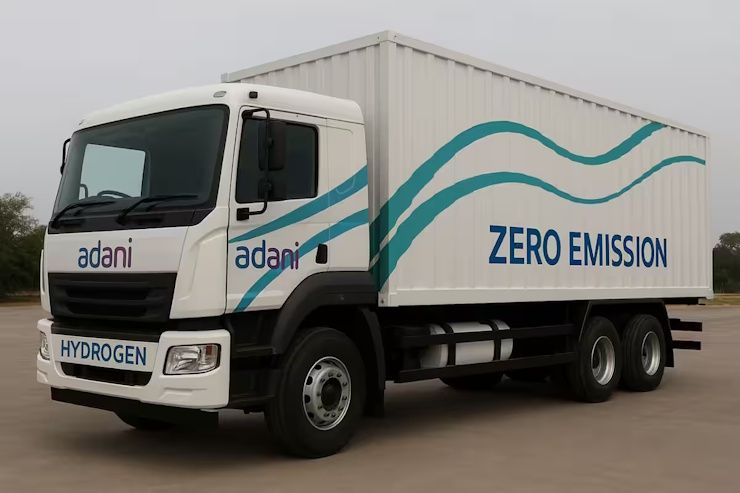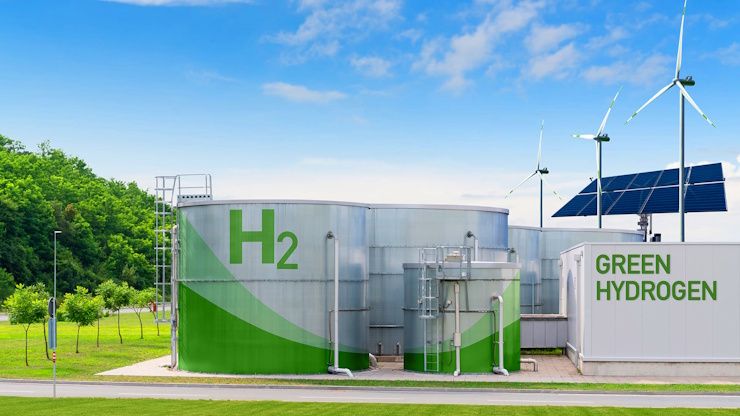Green Hydrogen GST Rate To Be Slashed From 18 % To 5 %: Adani Wants To Become World's Biggest Green Hydrogen Producer


In a move that could significantly alter the economics of clean energy, the GST Council has recommended reducing the goods and services tax on green hydrogen from 18 percent to just 5 percent. The announcement coincided with the birthday of Gautam Adani, a symbolic alignment considering the Adani Group currently runs India’s largest green hydrogen facility.

While the optics are unmistakable, the implications are even more substantial. A lower tax rate could pave the way for faster adoption of hydrogen as a mainstream energy source across mobility, industry, and power sectors. Notably, one of India's richest man and noted industrialist Gautam Adani wants to become the world's biggest green hydrogen producer.
Green hydrogen has long been hailed as a potential game-changer in India’s energy transition, but cost barriers have kept it out of reach for most commercial use cases. The latest GST cut could lower production and distribution costs, making it more competitive with fossil fuels and even with other clean energy options like solar and bio-CNG.

India’s green hydrogen ambitions are part of a broader strategy to achieve energy independence and reduce its reliance on imported fuels. With over 85 percent of crude oil being imported, and global energy markets becoming more volatile, the government sees green hydrogen as a strategic buffer.
The 5 percent GST slab brings green hydrogen in line with other clean fuels such as ethanol and biogas, which already enjoy preferential tax treatment. This move helps align the policy structure with the National Green Hydrogen Mission, which aims to produce 5 million metric tonnes of green hydrogen per year by 2030.
Lower GST also enhances the viability of pilot projects already underway in sectors like steelmaking, fertilisers, and long-haul trucking. If hydrogen becomes cheaper to produce and store, its integration into these hard-to-abate sectors could accelerate, not just for large conglomerates but also for smaller industrial clusters.

While the tax cut is a step in the right direction, industry experts caution that multiple bottlenecks remain. Electrolyser costs are still high, the power needed to generate green hydrogen must come from fully renewable sources, and distribution logistics are nascent at best. Without a coordinated rollout of infrastructure, the tax benefit may not reach the last mile or mid-sized manufacturers.
Furthermore, adoption in mobility, especially for commercial transport, requires hydrogen refuelling stations at scale. Currently, these are extremely limited, even in industrial states like Gujarat and Maharashtra. Unless public and private players commit to rapid infrastructure development, green hydrogen may remain a boardroom buzzword rather than a daily-use fuel.
The timing of the announcement - aligning with Adani’s birthday - has not gone unnoticed. The group has invested heavily in green hydrogen, setting up integrated projects combining solar power, electrolysis, and storage. With GST now reduced, these projects could become even more economically attractive.
That said, the field remains wide open. Reliance Industries, Indian Oil, NTPC, and several public sector undertakings are all preparing to enter or expand their hydrogen portfolios. A price war could soon follow, which might drive down green hydrogen rates for bulk buyers and transporters.
The GST cut is not just about hydrogen - it is a signal that the government is willing to use tax tools to shape the clean energy landscape. In the future, similar tweaks could be expected for components like electrolysers, storage tanks, and fuel cell vehicles.
If India can build a well-priced hydrogen supply chain, it could not only decarbonise industries but also position itself as a global exporter of clean fuel. But that dream hinges on fast-tracking infrastructure, creating stable pricing mechanisms, and integrating state policies with the Centre’s roadmap.
Cutting GST on green hydrogen is a smart fiscal move that makes the clean fuel more viable in theory. But without massive on-ground execution, from electrolyser manufacturing to delivery infrastructure, the benefits will be limited to a few large players, like say the Adani group. If followed by timely investment and public-private coordination, however, this could mark the beginning of India’s real hydrogen era.